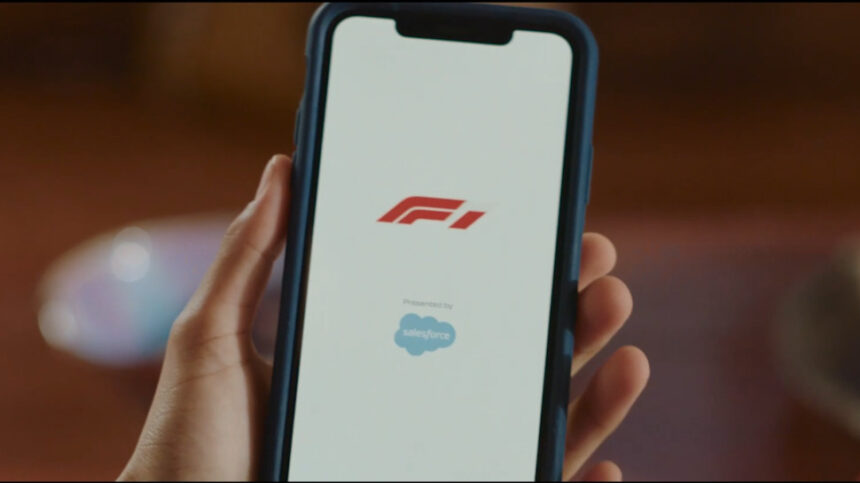Always regarded as one of the world’s most glamorous and high-end sports, Formula 1 has undergone somewhat of a fanbase transformation in recent years.
Far from being the preserve of geeky car nuts, the Drive to Survive/Netflix effect has helped promote the sport to a younger and more diverse audience across the globe, boosting viewership and online engagement to new highs.
But with so many different kinds of fans looking to engage with the sport, just how can Formula 1 ensure it remains reactive and helpful across the season?
“Quite incredible”
“It’s actually quite incredible,” Matt Kemp, Head of CRM at Formula 1, told us at the recent Agentforce World Tour London event.
He says while it’s no secret Formula 1 fans used to be middle-aged men, these days, “it’s a much younger, much more diverse audience than we ever thought we would get to in this short space of time.”
“You’ve got such an emotive fanbase that buy into teams,” he adds, “(and) we’ve definitely raised the bar over the last number of years in terms of diversifying our fanbase, growing our global audience from 500 million to Nielsen net ratings of 820 million.”
Much of this has been down to the major transformation the sport has been through since its purchase by Liberty Media in 2017, which kickstarted a push to better understand and connect with fans.
“We had ambitions to leapfrog other sporting vendors, and at the time we were fairly basic in our marketing construct,” Kemp notes, “we wanted a solution that would allow us to create more and more different segments, expand how we’re utilizing our data for better use, and start to think about always-on journeys, cross-product journeys.”
For this, Formula 1 turned to Salesforce, which Kemp notes was, “the obvious choice for us.”
Having started with customer service tools, the partnership has now grown to entail most of the Salesforce platform as Formula 1 looks to maximise its interactions with fans across the globe via offerings such as F1 TV, esports, fantasy leagues, and much more.
A key part of this is personalization and customization, which Kemp says offer real evidence in increasing engagement with the sport.
At the core of this is around race weekends, where, as organizers, Formula 1 has the ultimate oversight on exactly what is happening in real-time, meaning it can be the definitive source of knowledge on details such as race starts and incidents.
But Kemp notes this can also include dealing with huge amounts of customer service issues such as fans needing to reset their F1 TV passwords minutes before a race begins – something which if not fixed in time can lead to negative perception.
“Our fans aren’t unique to Formula 1, but they are unique to sport,” Kemp notes, “when they want to watch the race, that want actually feels like a need, it’s a very emotional want.”
He adds this means getting a fast response to a customer service issue is significantly more important to them than it would be if they were contacting a phone bill provider or something similar – so providing a smart, personalized service is key.

Unsurprisingly, AI tools are playing a key role in this, with Salesforce’s Einstein and Agentforce systems providing the backbone for several major Formula 1 services.
“What we don’t want to do is jump in with two feet and use agentic AI just because it’s there,” Kemp says, “that doesn’t make any sense to us, it’s got to have value, it’s got to have purpose, and it’s got to benefit, ultimately, the fans.”
So far, this includes handling these customer service replies in the F1 portal, meaning users get a much quicker response time to their queries, keeping satisfaction levels high. Agentforce in Service Cloud can also create comprehensive fan profiles including data on purchase history, marketing engagement, and past interactions to help customer service agents deliver fast, personalized support with just a few clicks.
Kemp notes that since adding Service Cloud customer services using GPT, as well as its existing knowledge base and LLMs to provide details, handling times have been reduced by 50% across customer services, and agent handling time has been cut by 20%.
“It makes a huge difference in terms of building up that engagement, and it’s that engagement that affords us, and gives us the right to then go and start thinking about how we want to monetize it,” he notes.
Ambition vs expectations
Along with the fans, Kemp notes that dealing with the teams has also benefitted from greater insight into the sport’s data, and its fans.
“One of the challenges we’ve faced as an organization historically is that the teams and F1 have wanted to work more closely together,” he points out – highlighting that constraints on data and the desire to treat all teams the same means there have been challenges.
However he notes that improving technology offers opportunities for closer collaboration, as although the teams are all talking to the same fans, Formula 1 has far more data that they do
“We all have the ambition, but the expectation to turn that into reality overnight is not always as easy as we’d like it to be,” he adds, noting that although the teams and Formula 1 are on the same page with their ambitions, they are at very different stages.
Kemp notes that if everyone is messaging the same fans at the same time, there is a risk of overloading, but says utilizing technology such as Salesforce, “opens the door to work smarter and closer with the teams so that we’re all working at the same angle.”

This includes the recently-released big-budget Hollywood Formula 1 film, which Kemp says should help expand the sport’s appeal even further.
“One of the unique things about the F1 movie is how authentic it’s likely to be,” he notes, “they came to the tracks, and they built the cars to run alongside, they had those insights, they were using the telemetry data – all the actors, the directors were trained on how to understand that data to fill that into the team, overseen by Lewis (Hamilton, a producer and expert advisor on the film) to make sure it was as authentic as possible – you started to see a much greater depth in the reality of how stuff is put together.”
Ultimately though, Kemp brings us back to the importance of the fans, and the sheer scale of content Formula 1 can bring them.
“There’s so much more opportunity,” he notes, highlighting the huge amount of trackside data and TV footage generated on every race weekend that should soon be utilized to create the likes of personalized highlights.
“We’ve got the technology…we’ve got the video inventory – but we haven’t necessarily linked the two yet,” he adds, “the big word for me in my area over the next couple of years is convergence, in terms of how we bring everything in…to hyper-personalize.”
“That word convergence, it’s a bit of a cliched word, but that would be massive for me in bringing it all together.”








